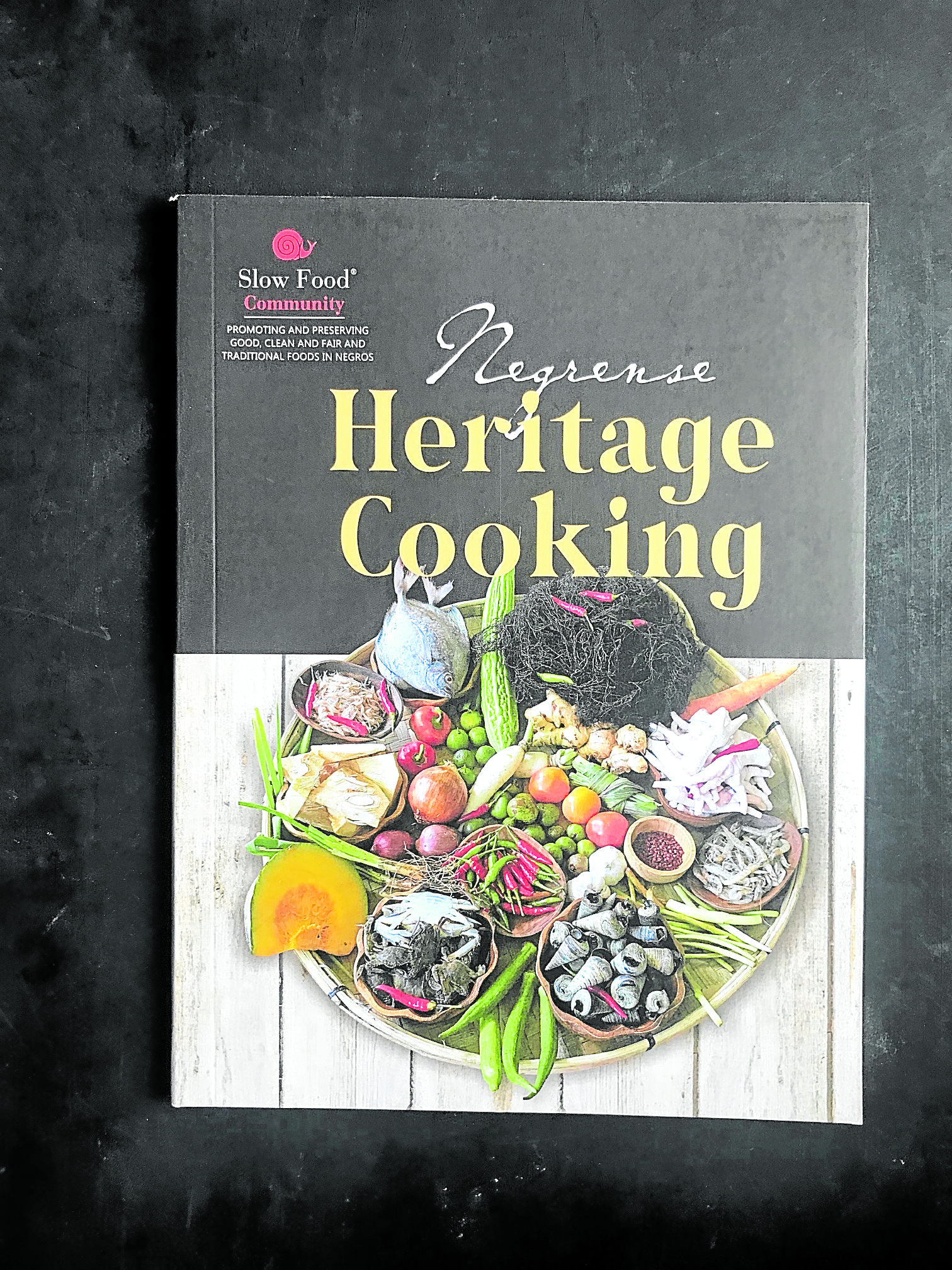Upon the invitation of Tourism Secretary Bernadette Romulo-Puyat, my good friend Yvette Fernandez and I got to revel in Negros Occidental’s bustling cultural scene for two short days.
Our first order of business was the launch of the “Negrense Heritage Cooking” book, held at Casa A. Gamboa. The charming place is the American colonial-style house of Aguinaldo Gamboa, a sugar hacendero, and wife Dr. Alicia Lucero, parents of the late esteemed food writer Doreen Fernandez.
Built in 1939, the ancestral chalet is now managed by Lyn Besa Gamboa, Fernandez’s sister-in-law, and daughter Reena, who is the president of Slow Food Negros and who spearheaded the book’s production.
Done in just two months, the book gathers 65 heirloom dishes that showcase local ingredients and traditions, such as pangat, which is the Ilonggo version of laing; laswa, vegetable soup thickened with alugbati; and pinamalhan or fish braised in coconut vinegar. The procedures are easy to follow and the sections are varied. There’s a category on batwan-based food, nose-to-tail, and foreign-influenced numbers such as morisqueta tostada.
To celebrate the book, three chefs from the Slow Food community prepared a feast. Gabriel Melocoton did a twist on kinilaw na tangigue by using smoked gata and passion fruit. Joeri Arro cooked linagpang seasoned with guinamos, while Mia Gonzaga served her beloved lumpiang ubod. To cap off the meal, Shuni Osano served honey-
butter-glazed saba nga saging.The following day, we were taken to a sprawling farmhouse turned hacienda for a hearty lunch prepared by the in-house chef Paolo Consing, who trained in a Daniel Boulud restaurant. As you walk into the Bali-like sanctuary called Punong Gary’s Place, you are greeted with lush greens, beautiful casitas, an inviting pool and beautiful art pieces, including a stone structure of the couple owner at the foot of a giant age-old tree.
We were led to a dining space in the middle of the pond where the chef served us a seven-course Latin-inspired meal that included a soup made with tricolor quinoa, roast chicken thighs seasoned with South American spices, and lomo saltado with adlai.

Silay’s sweets
El Ideal has withstood the test of time, with the heritage house of Cesar Lacson Locsin still standing on the same spot it was built in the 1920s. The mansion-slash-bakery continues to be the favorite pit stop for pasalubong. The shelves are stocked with biscuits such as pacencia, favorito, biscocho, lubid-lubid, masa podrida, and the bestsellers, guapple pie and coconut pie.
Just a stone’s throw away is the two-story ancestral home of the Montelibano-Lacson sisters, Soledad and Maria. Built in the 1900s, it is where you’ll find the best empanada de kaliskis. It’s under the brand Emma Lacson’s Specialties, and Emma’s daughter Nora is the one manning the kitchen. She used to sell a lot of her pili squares as the tourists loved them, but now that tourism is at a standstill, her empanada is the one locals have been ordering a lot of. She also makes fresh lumpia and señorita, which is made of cookie crumb layers and dulce de leche.
Another household name for delectable desserts is Ann Co, who is known for her frozen brazo de mercedes. It comes as whole rectangular cakes and in portable cups. She also bakes celebration pieces like multi-tiered wedding cakes. At her cafe, savory plates are also on offer, such as muscovado tocino and chorizo budbud.
Bacolod’s best
There’s no shortage of culinary talent in this province. Another proof to this is Don Colmenares, whose Berbeza Bistro has been spicing up the restaurant scene here since 2018.
The 30-year-old Enderun graduate, who is also a councilor at the municipality of Hinigaran, specializes in Southeast Asian fare using only ingredients found within his vicinity. In fact, the only items he gets from Manila are spices. The rest are sourced from nearby cities, like duck and organic lamb from neighboring Bago.
He can customize a menu based on preferences, and that’s what he did the night we had dinner at his place. Our seven-course meal consisted of fork-tender lamb kaldereta on tinigib polenta, rib eye with smoked kamote puree, and Kanlaon pear poached in spiced wine. Of the lot, his inspired take on pancit molo stood out. It came as a duck meat and egg yolk ravioli with a lemongrass-infused chicken broth.
While in Bacolod, visit the Art District, which is home to artist-initiated shops including a café, dance studio, yoga room, tattoo shop and a small cinema. The space aims to cultivate art consciousness and practice among the locals.
It started with the Orange Project back in May 2005. The exhibit hall, managed by contemporary visual artist Charlie Co and businessman-artist Victor Benjamin Lopue III, laid the foundation for what it is today, a colorful compound bustling with aesthetic flair and inspiration.
On our last night, good friend Chin-Chin Uy Jr. gathered the best his province has to offer and laid them out at May’s Organic Garden and Restaurant. On the menu were two kinds of chicken inasal—one from Aida’s and the other from Twilight, where native chickens are used, the popular kansi from Sharyn’s Kansi House, a wealth of seafood including steamed diwal, as well as organic lechon and roast lamb. Muscovado piaya from Fresh Start Organic, G’s potato cake and ensaymada by Stephen Escalante capped the meal.
Special thanks to the Department of Tourism, Secretary Bernadette Romulo-Puyat, Silay City Mayor Mark Golez, Gov. Eugenio Lacson, Ramon “Chin-Chin” Uy Jr. and Seda Capitol Central.